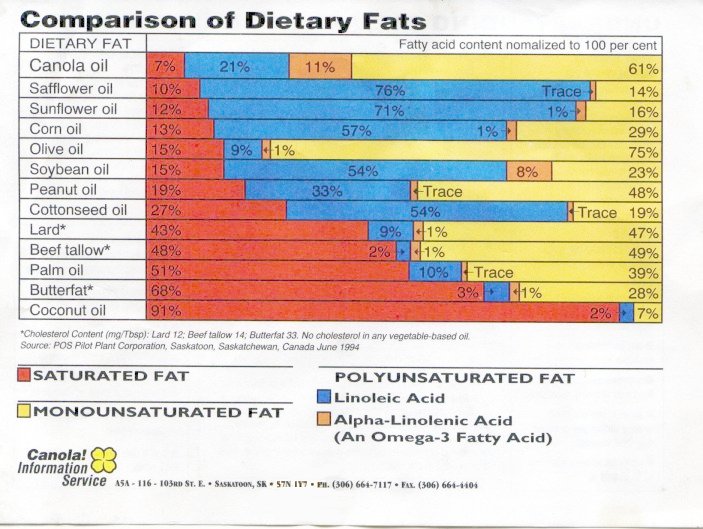There are over 40 essential nutrients for humans. By essential, we mean “items the human body cannot manufacture, therefore must consume from the diet”.
Despite there being dozens of fatty acids, only omega 6 and omega 3 fats are essential. But before we discuss these items specifically, let’s learn a little bit on why fat is so important.
Essential Facts on Fats
Every cell in your body is surrounded by a cell membrane composed of different fatty acids. All dietary fatty acids are incorporated into cell membranes, and the percentage of particular fatty acids in our membranes dictates how a cell responds and grows. Cell membranes made up of an optimal ratio between saturated and unsaturated fatty acids allow the necessary nutrients to enter and exit the cell.
Although some saturated fats are needed for structure, consuming a diet excessively high in saturated or trans fats can result in cell membranes becoming too rigid. A cell membrane that becomes too rigid will result in impaired transmission and a decrease in overall functioning.
Conversely, cell membranes containing a larger percentage of unsaturated fats, particularly the essential omega-3 and omega-6 fats, lead to improved production of vital hormone-like substances called prostaglandins.
Prostaglandins help regulate many important physiological functions including blood pressure, blood clotting, nerve transmission, the inflammatory and allergic responses, the functions of the kidneys and gastrointestinal tract, and the production of other hormones.
Both omega-6 and omega-3 fats are essential for optimal immune system functioning, with omega-6 fats having a more pro-inflammatory role. In contrast, omega-3 fats are generally seen as being anti-inflammatory. Unfortunately, when the balance between these two types of fats goes awry, health and performance complications can emerge.
Experts agree that the ideal ratio between omega-6 to omega-3 fats is in the neighborhood of 2:1 to 4:1. Unfortunately, in the current North American diet it is not uncommon to see the ratio of omega-6 to omega-3 fats being closer to 10:1 – 20:1. This imbalance in your fats can lead to a pro-inflammatory state that increases your risk for diseases such as heart disease and cancer and can make fat loss even more difficult.
Where Do We Find These Fats?
Omega 6 fats are found in large concentrations in oils of grain (i.e. corn), nuts (i.e. soybean) and seed (i.e. sunflower, safflower) origin. Unfortunately, as a result of changes to our food preparation/production methods in North America, these fats are now found in great abundance in our food supply.
Conversely, omega 3 fats are found in relatively few products. Among products of vegetable origin that contain large amounts of omega 3s, flax and chia seeds are some of the best sources, with walnuts, soy beans and hemp seeds providing small amounts.
While vegetable sourced omega 3 fats are all well and good, they aren’t necessarily optimal. Unfortunately, the human body cannot effectively convert large amounts of a-linolenic to its more biologically active forms eicosapentaenoic acid (EPA) anddocosahexaenoic acid (DHA).
In reality, most humans only convert 5-15% of the a-linolenic we consume to EPA (and subsequently to DHA). Therefore, for best results try to incorporate foods that contain both a-linolenic acid as well as both EPA/DHA into your diet.
Vegetable-based omega-3s
| Serving Size | Omega 3 Content | |
| Flax seeds | 1 TBSP | 2.3 g |
| Walnuts | 1/4 cup | 2.3 g |
| Chia seeds | 1 TBSP | 1.8 g |
| Soybeans | 1 cup | 1.0 g |
Animal-based omega 3s
| Serving Size | Omega-3 Content | |
| Salmon | 3 oz. | 1.95 g |
| Sardines | 1 can | 1.4 g |
| Mackerel | 3 oz. | 1.2 g |
| Rainbow Trout | 3 oz. | 1.0 g |
Omega 3s and Fat Loss
Although omega-3 fats have a long history of being studied for their beneficial effects on the heart and brain, it is only relatively recently that these fats have been shown to be equally beneficial in reducing your waistline.
A recent study out of Australia demonstrated that giving a concentrated DHA fish oil supplement to an overweight group of exercisers led to that group losing almost 10x more fat mass than a group of exercisers given a safflower oil placebo (safflower oil is high in omega-6 fats). This was despite the exercise intervention only consisting of three 45 minute cardiovascular training sessions per week!

Hill et al. Am J Clin Nutr 2007; 85:1267–74.
Mind you, the dose of fish oil given in the study was quite concentrated, delivering almost 1500 mg of DHA daily. Given that a conventional fish oil capsule provides 180 mg of EPA and 120 mg of DHA, to obtain 1500 mg of DHA, you would need to take 13 fish oil capsules to receive a comparable dose.
By contrast, a 3-oz. piece of salmon provides almost 1200 mg of DHA and comes with a physique friendly 23 grams of high quality protein to boot.
Clearly, incorporating a few fatty fish meals every week is a move that can pay significant health and performance benefits!


